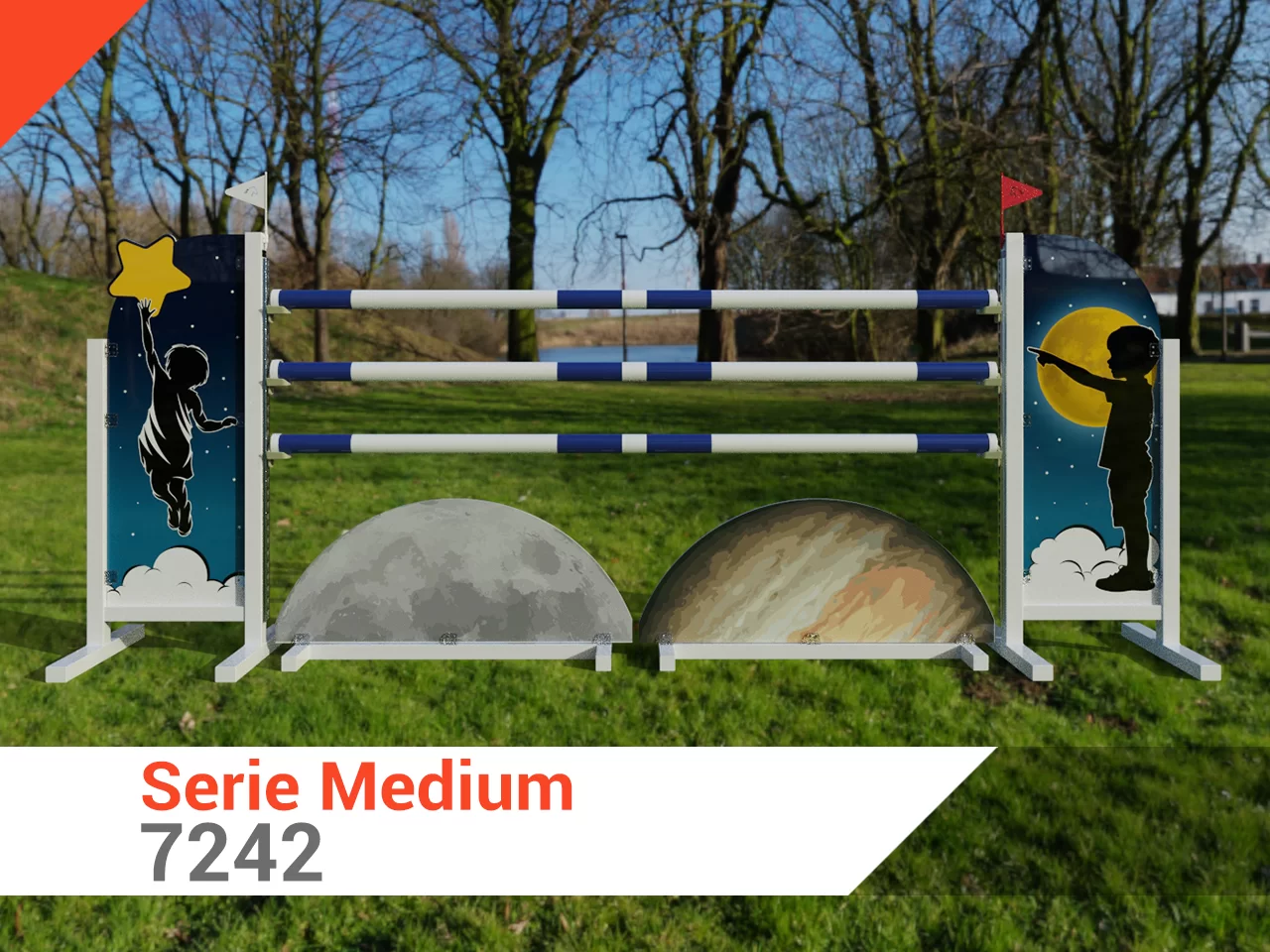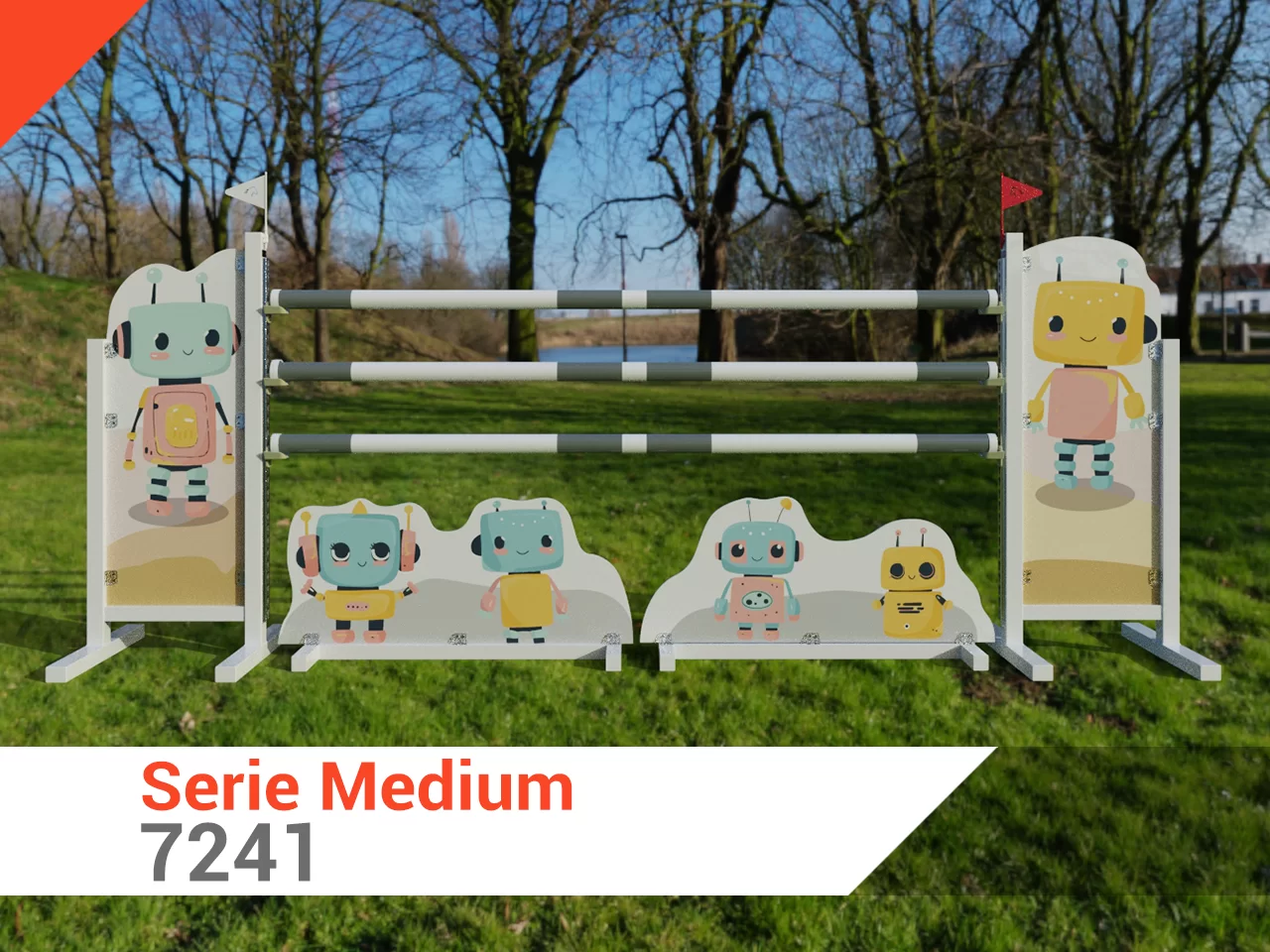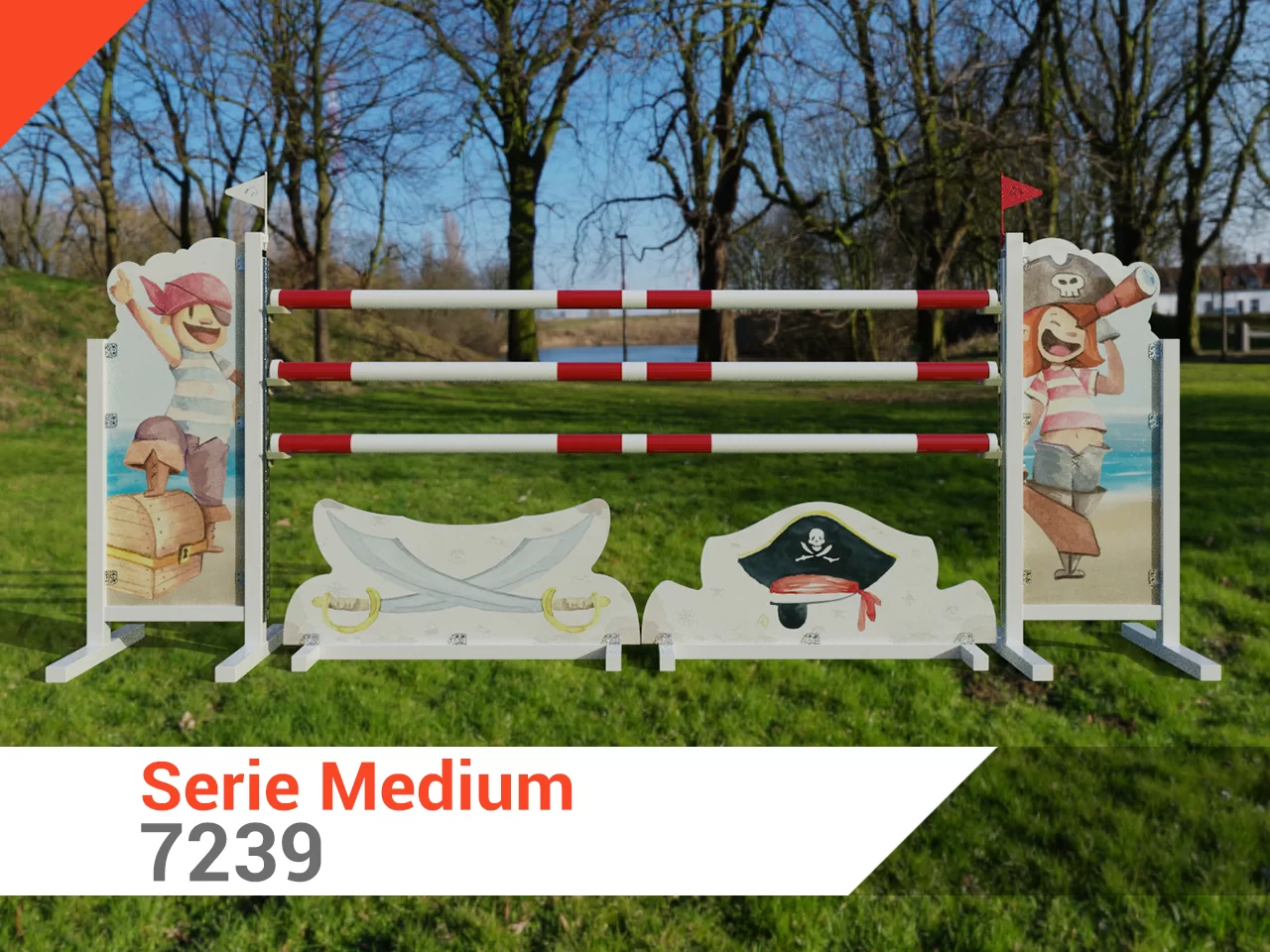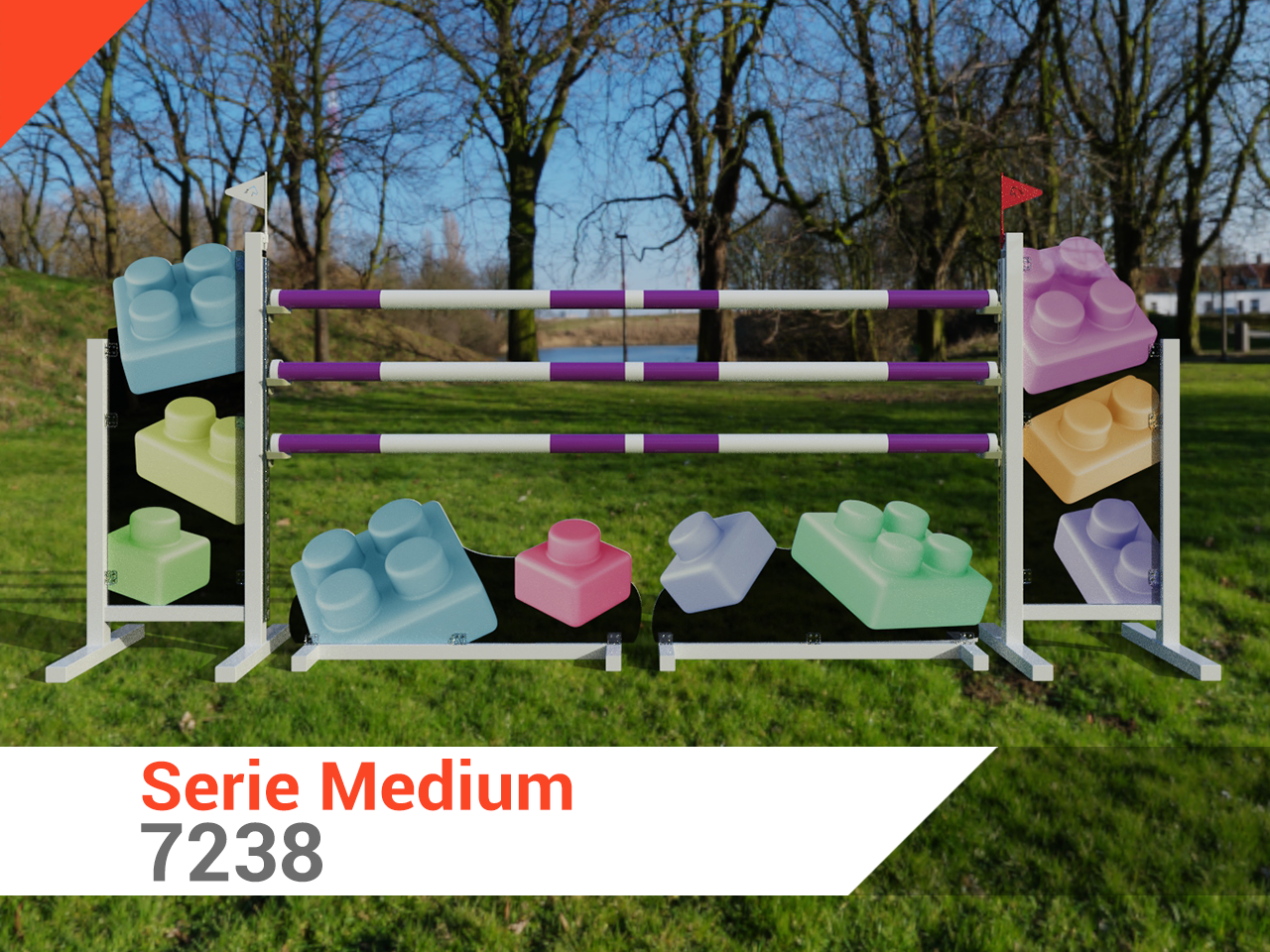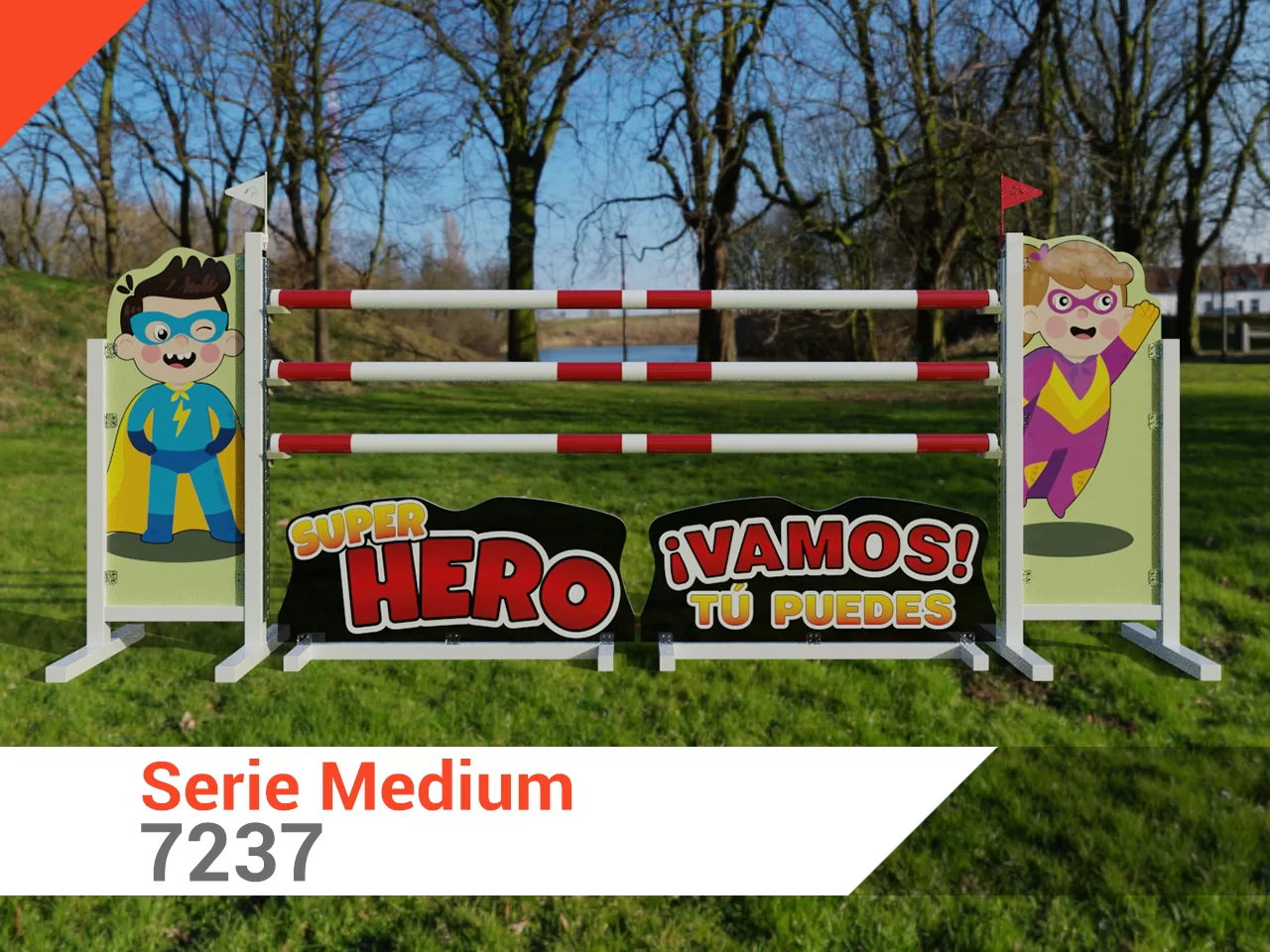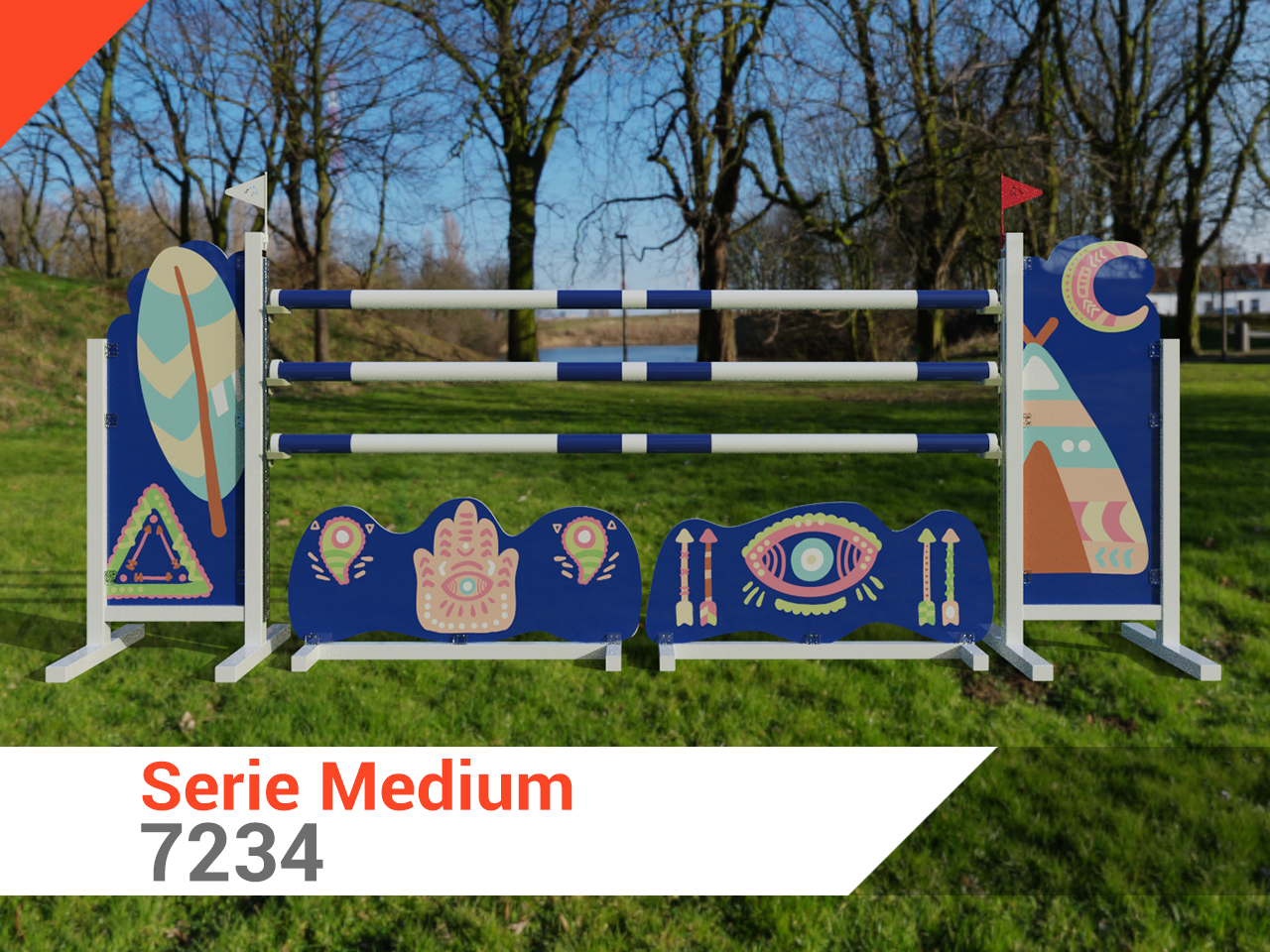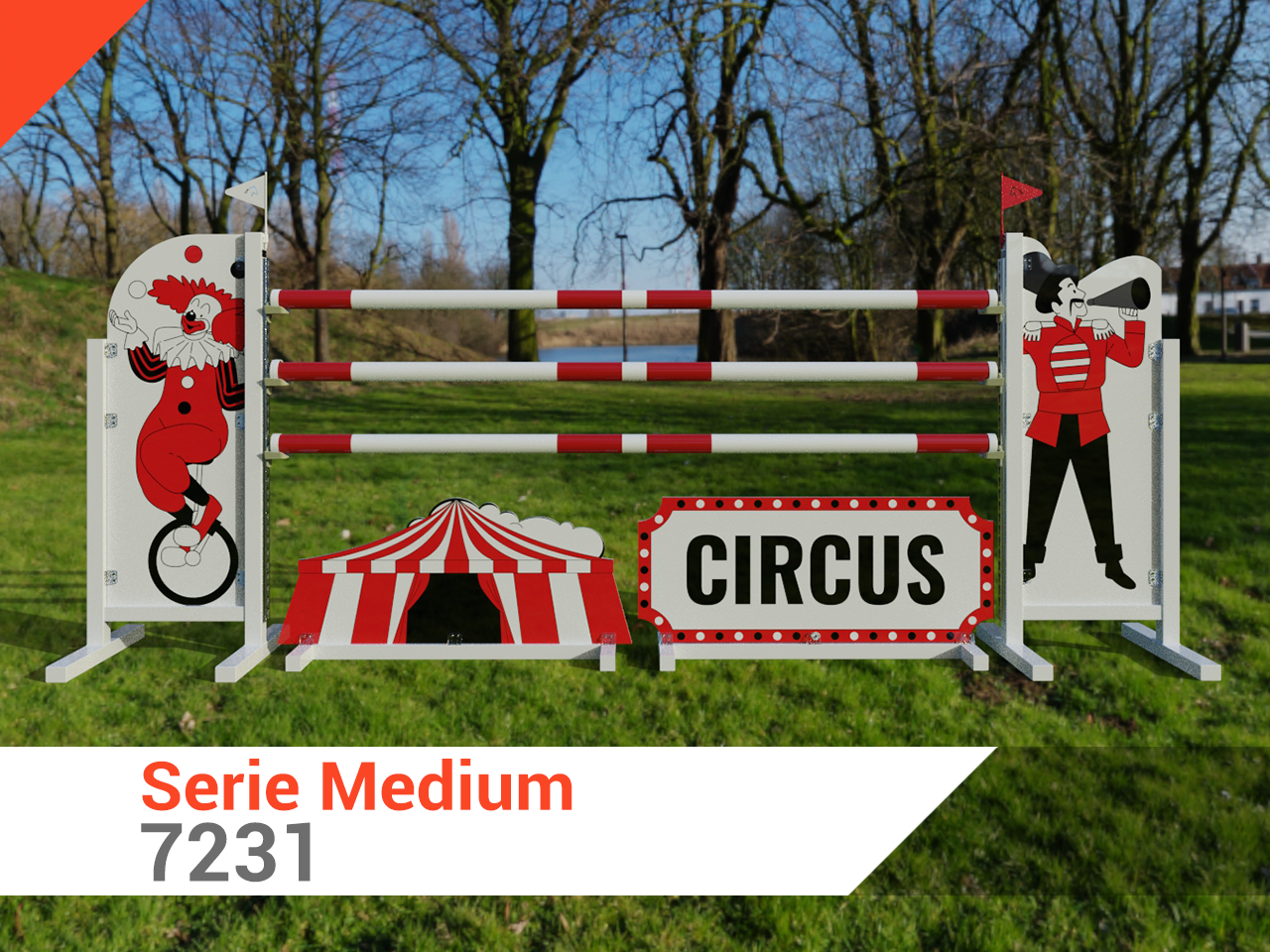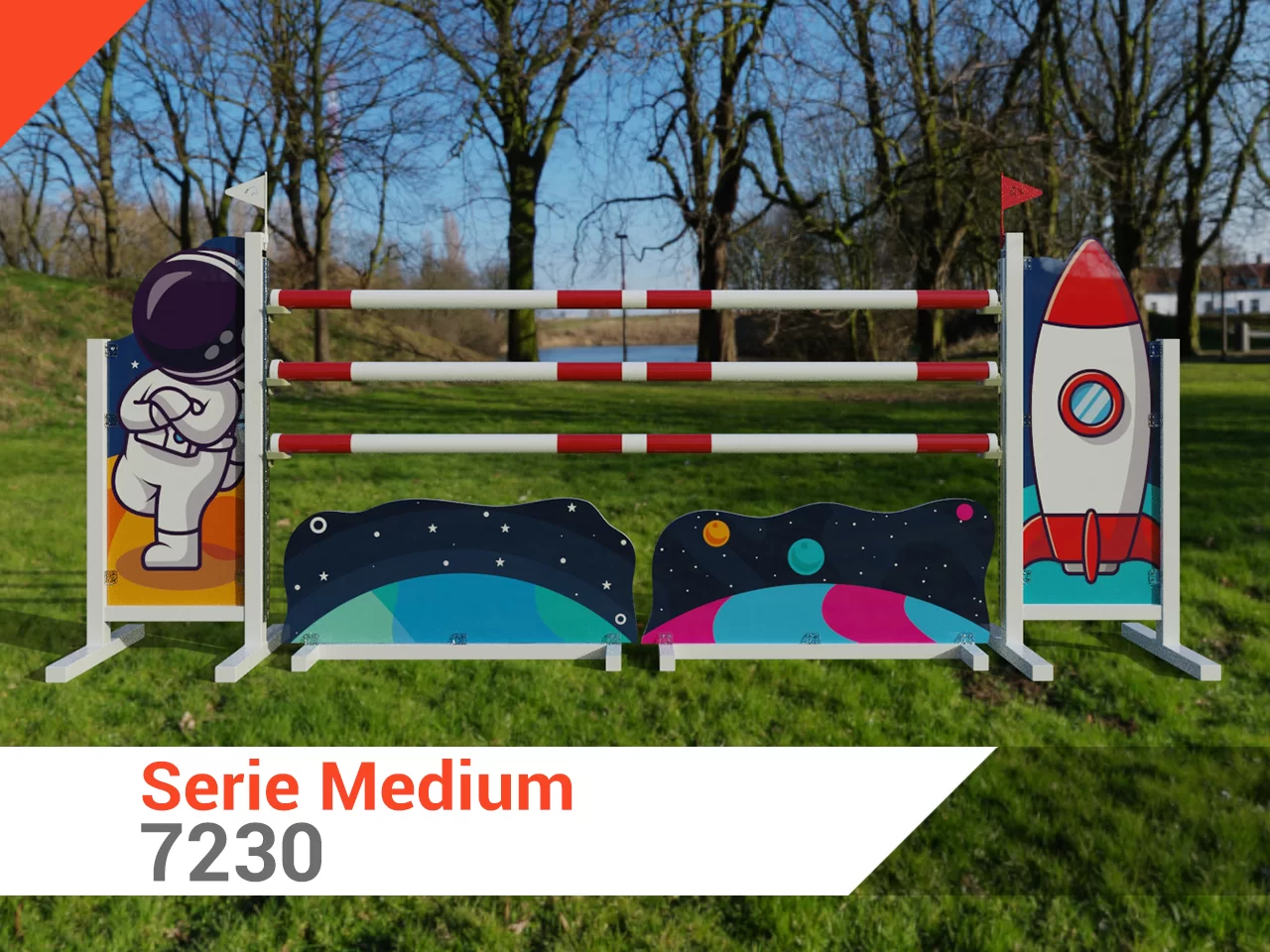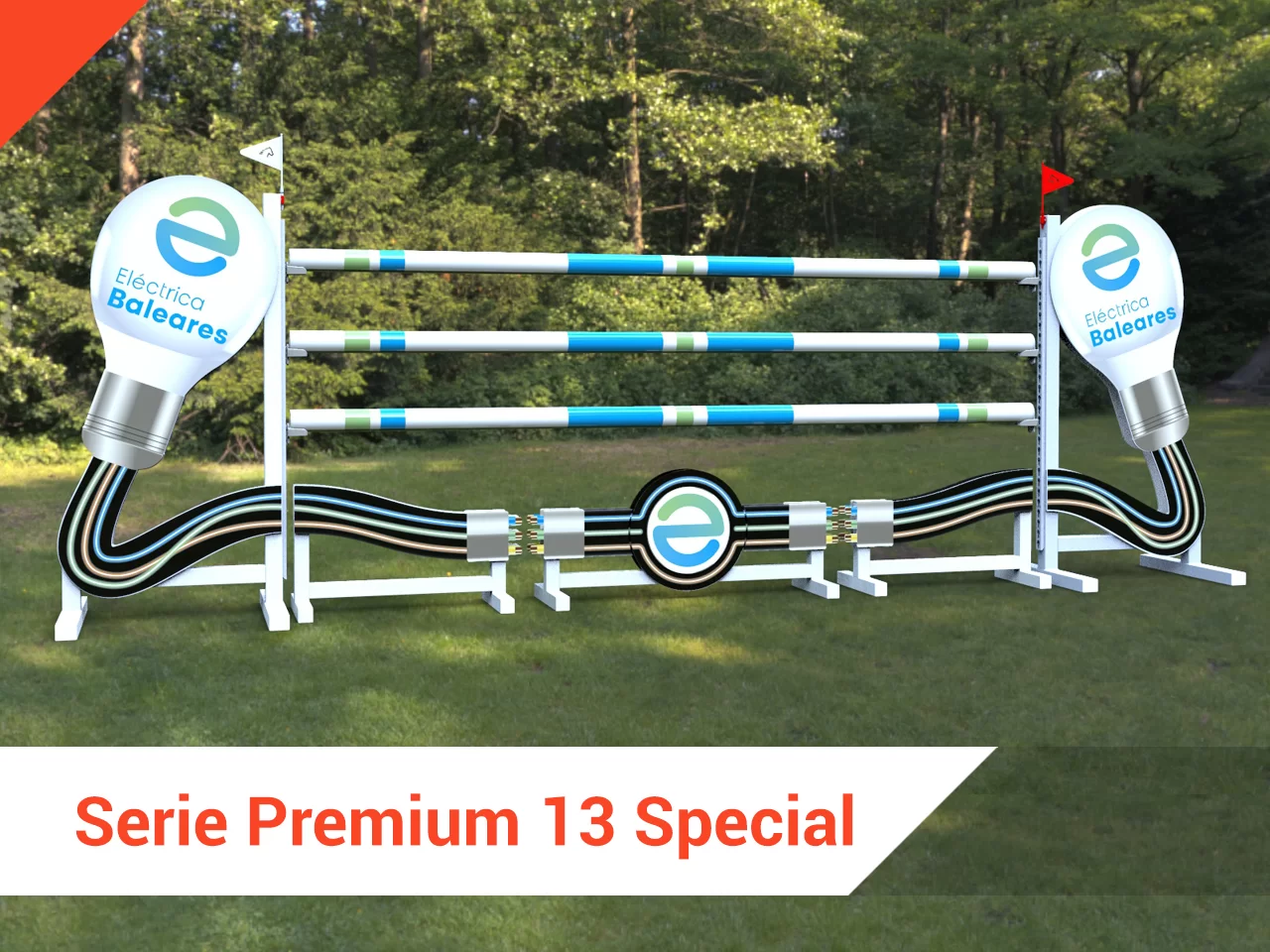JUMPING
Discover our wide range of show jumpings for competitions and horse riding training, as well as other equestrian equipment related to this discipline. At Equspaddock, as experts and true horse lovers, we have the highest quality and most resistant equestrian jumps on the market.
Riders and horses must jump over obstacles in a coordinated way without making any mistakes or knocking down any element.
This equestrian jumping technique is very popular and is one of the most popular in equestrian sports. For this reason, in Spain this type of horse competition is regulated by the Spanish Equestrian Federation and the FEI. Moreover, they have been held in championships, official competitions and equestrian contests for more than a century, so buying show jumping elements is very common.
What matters in this type of equestrian show jumping? The winner is the team that commits the fewest penalties, manages to complete the circuit in the shortest time or obtains the highest number of points.
It is important to take into account the dimensions required by the official organisation for this type of equestrian event. When a horse is in the arena, all entrances and exits must be physically closed.
Regarding the dimensions of the arena, it must have a minimum of 4,000 m2 and the smallest side must be at least 50 m. In the case of an indoor arena, it shall be a minimum of 1,200 m2 and the smaller side shall be 20 m.
Types of equestrian show jumping obstacles
In show jumping training and competitions, there are many different types of equestrian obstacles. You can find them on our website.
Vertical: this is one of the most common horse jumps at any event. It is an obstacle made up of bars or planks placed one on top of the other. All the elements that make it up must be placed in the same vertical position.
Oxer: These are obstacles that requires concentration and practice to jump over them with agility. They are placed at the same height with a separation of a metre or a metre and a half between each one. In this type of event, safety supports are used to guarantee the integrity of the animal.
Triple pole: three vertical obstacles in a row in a gradual sequence. The first one being the lowest and the last one the highest.
Bidet: It consists of a vertical or an oxer next to a trench with water.
Rias: these are long-distance events involving water. This element must be located at ground level. In addition, there may be no obstacles before, in the middle or after the water. Sometimes, a small hedge is included in front of the water, maximum 50 cm high and between 2 and 4.5 metres.
Wall: these jumps are large walls which are made of lightweight materials with a considerable height. If the horse hits them at any time, they fall without hurting the horse.
Combination: sets of different obstacles spaced between 7 metres (minimum) and 12 metres (maximum). Each of the obstacles must be overcome separately.
What is the course in a show jumping competition?
A show jumping course is understood to be the route that the rider and horse have to follow in order to jump the different events in the competition. When it comes to organising it, the type of events and jumps can be varied. In this way, higher expectations are created for the competition, both for the participants and the spectators.
Any event must be approved by the RFHE. In addition, the Show Jumping Technical Commission will also be consulted to ensure that they comply with the regulations. All must be fair to all participants and guarantee the safety of the horses.
The Field Jury must inspect the entire course before the start of the event to ensure it is safe and complies with the rules.
How many obstacles are needed for this type of competition?
The minimum and maximum number of obstacles depends on the length and measurements of the equestrian arena used in the competition. As explained in the official RFHE document, “the total length in metres of a course may never exceed the number of obstacles in the event multiplied by 60”.
As mentioned before, an outdoor show jumping course must have a minimum of 4,000 m2 and its shortest side must be at least 50m. Indoor arenas must have a minimum of 1,200 m2 and a smaller side of at least 20m.
How are the pyramids arranged to delimit the arena?
The pyramids that we have available at Equspaddock are used to delimit the equestrian track and to indicate the different events to be carried out.
For example, the pyramids that indicate the entrance and exit of the arena are placed at a minimum of 6 metres and a maximum of 15 metres from the first and last obstacle. This pyramid includes a red flag on the right side and a white flag on the left side.
The numbered pyramids are used to indicate the order in which the horse and rider must perform the jumps. In some cases, the numbers are accompanied by pyramids with letters. This number combination indicates that it is a combination of obstacles.
Search your product

